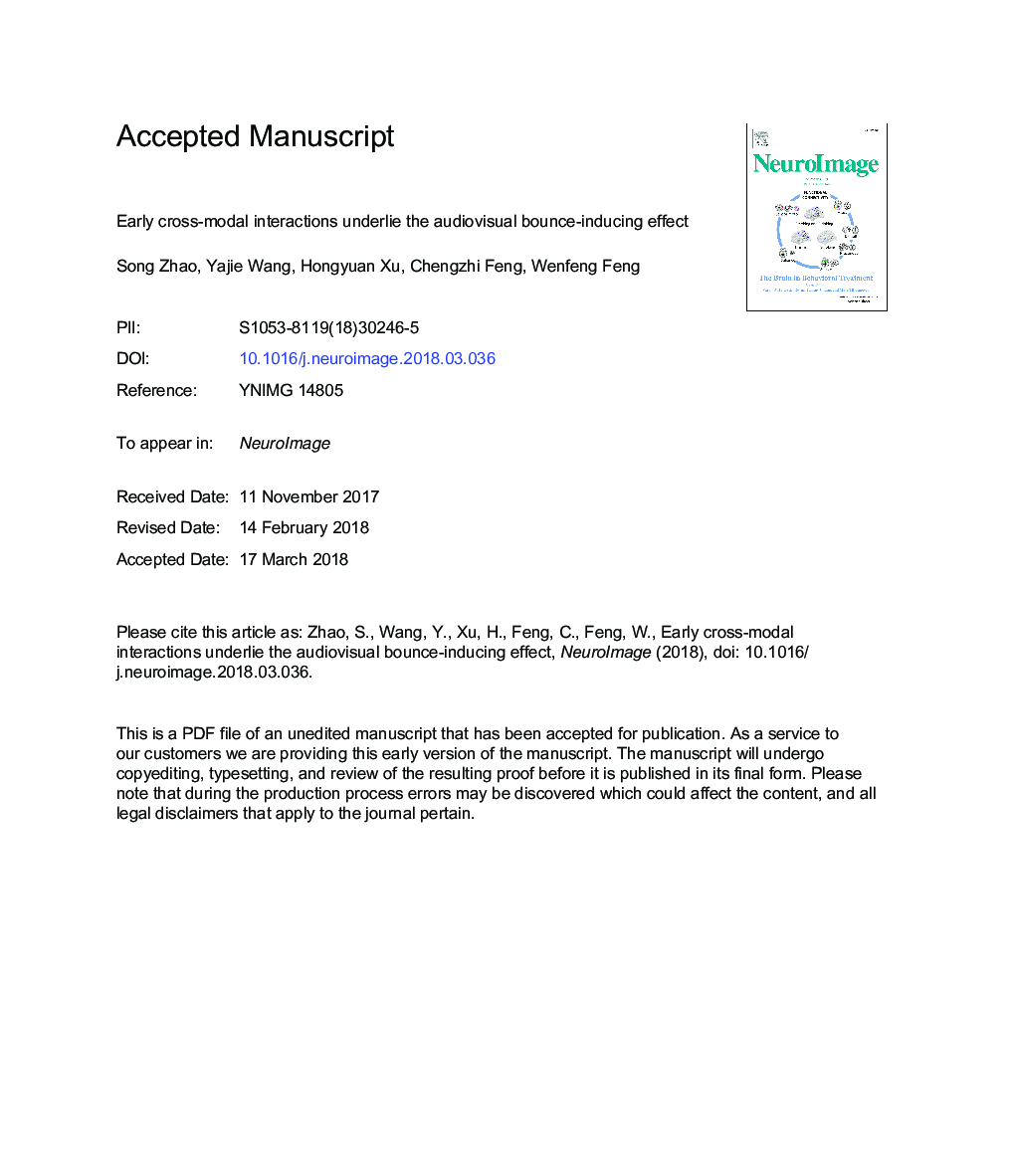| Article ID | Journal | Published Year | Pages | File Type |
|---|---|---|---|---|
| 8686914 | NeuroImage | 2018 | 34 Pages |
Abstract
Two identical visual disks moving towards one another on a two-dimensional display can be perceived as either “streaming through” or “bouncing off” each other after their coincidence/overlapping. A brief sound presented at the moment of the coincidence of the disks could strikingly bias the percept towards bouncing, which was termed the audiovisual bounce-inducing effect (ABE). Although the ABE has been studied intensively since its discovery, the debate about its origin is still unresolved so far. The present study used event-related potential (ERP) recordings to investigate whether or not early neural activities associated with cross-modal interactions play a role on the ABE. The results showed that the fronto-central P2 component â¼200â¯ms before the coincidence of the disks was predictive of subsequent streaming or bouncing percept in the unimodal visual display but not in auditory-visual display. More importantly, the cross-modal interactions revealed by the fronto-central positivity PD170 (125-175â¯ms after sound onset), as well as the occipital positivity PD190 (180-200â¯ms), were substantially enhanced on bouncing trials compared to streaming trials in the auditory-visual display. These findings provide direct electrophysiological evidence that early cross-modal interactions contribute to the origin of ABE phenomenon at the perceptual stage of processing.
Keywords
Related Topics
Life Sciences
Neuroscience
Cognitive Neuroscience
Authors
Song Zhao, Yajie Wang, Hongyuan Xu, Chengzhi Feng, Wenfeng Feng,
